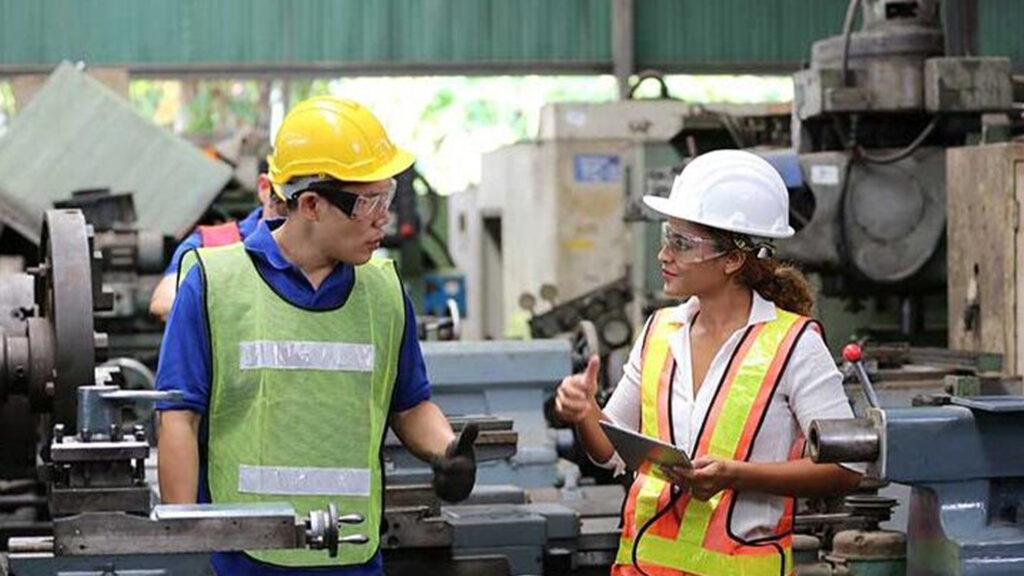Hosted by Greg Duncan, MELP, Senior EHS & ESG Content Manager, with added discussion from Killian Whooley, Global Enterprise Manager, and Chris Ahern, Manager of Customer Onboarding, the VelocityEHS webinar, “Permit-to-Work Systems: Real-World Best Practices to Optimize Your Process”, shares a detailed breakdown of Permit-to-Work systems, best practices to apply to a PTW system, as well as tangible examples and applications of PTW systems.
The webinar began with a poll of the audience, asking them what drew them to this Permit-to-Work (PTW) discussion. 58.1% of the audience who responded said that they were watching to learn how to upgrade or improve their current PTW system.
The session’s objectives were to understand:
- PTW basics, such as: PTW process overview; the roles and responsibilities at each step of the PTW process: initiation, permit request, approval, commencement of work, permit closure and renewal; common challenges that lead to errors in PTW system management.
- Best practices to standardize PTW systems and processes across locations, eliminate errors, reduce risk, and improve efficiency
- How the VelocityEHS Control of Work solution administers the PTW process
- Real-world lessons learned from successful PTW system implementations
What is a Permit-to-Work System?
It’s a formal system to identify, document and evaluate job/task hazards to ensure that work is performed safely. A PTW system verifies that all prescribed hazard controls/training/precautions are in place before any work on a task begins. Although they’re primarily used in high-hazard environments or jobs, PTW systems are applicable to jobs at all risk levels and across industries—they’re a critical part of an effective Control of Work (CoW) program.
Permits: The Heart of the Permit-to-Work System
Permits are detailed documents that authorize specified personnel to work on a specific task at a specific site; they define all hazards in a job and the necessary precautions to complete the job safely. Every permit must be reviewed and approved by the required individuals before any work can (or should!) begin. After a project has been completed, its permit must be closed to document the completion of the work.
The Permit-to-Work Process
All permits follow the same process through a PTW system: Employee/project initiation, permit request, permit approval, commencement of work, permit closure or renewal, and then it begins again.
The Benefits of Permit-to-Work Systems
PTW systems ultimately help organize jobs by broadening the visibility of projects across all sites; by tracking and verifying all permits and workers onsite; and by facilitating the scheduling and coordination of jobs or processes for larger and more complex activities before any work begins.
The Challenges of Permit-to-Work Systems
And while, ideally, all the pieces of a PTW system work together seamlessly, there are some challenges to note when it comes to managing a PTW system.
The common challenges of PTW systems revolve around standardization and centralization, or the lack thereof. Contract workers often travel between sites, across companies and work within several systems for their jobs, and if permits are filled out in a different way at each site, company and in each system, it leaves many workers at a loss, for not knowing how to translate the permit without clear guidelines and restrictions for their jobs.
Permit-to-Work Best Practices
To face the challenges mentioned above and experience the benefits of a solid PTW system, there are some best practices that can be utilized to keep a system well-organized and effective.
One best practice is that it’s important to anticipate permit suspensions, and potential permit interactions. Jobs will need to be stopped if the permit is lacking info or approvals; and it’s important to note how jobs and permits interact with other, ensuring that the activities allowed by one permit don’t create hazards for another.
There should also be a system in place for permit handovers. If work is carried out over multiple shifts, the permit will need to be handed over to a qualified person on the next shift to ensure that the permit stays on track. All permit handovers must be documented.
To keep a system running smoothly, don’t try to juggle permits. A PTW system is only effective if its permits are coordinated and controlled by an issuing/responsible authority related to the job, and if there’s adequate supervision of the permits being monitored. One person in authority cannot properly manage every permit, so make sure that there are enough people to keep the PTW system operating well.
Establish effective systems to manage PTW requests. And the most effective, efficient system to manage PTW requests is a digital one. By having all permits and necessary documents uploaded into the cloud, workers can submit and refer to permits for their work, and the employer hiring contractors will receive a notification each time a new permit is submitted or requires attention.
And, be intentional with permit approvals. Prioritize permits for jobs based on multiple factors – risk rating of a job, type of job, project timeline/deadline, etc.
This is just an overview of this intensive, impactful webinar on permit-to-work systems and practices. The details and discussion that the three presenters added to the session are a must-see. Check out the recording here or take a look at our other permit-to-work webinars and materials in our free EHS resource library.
